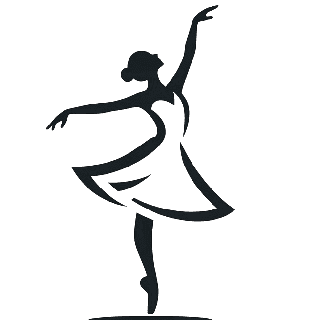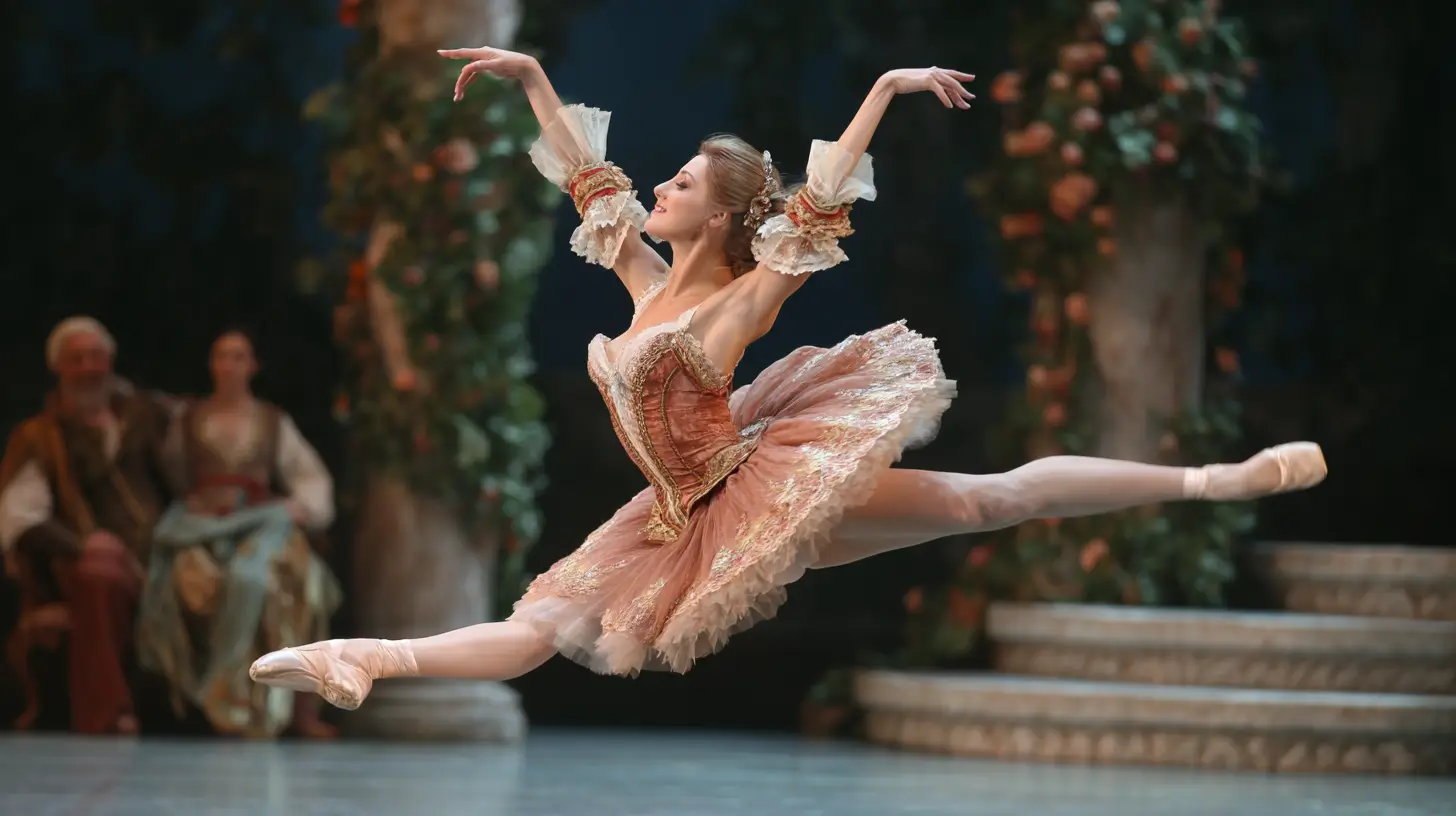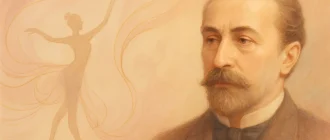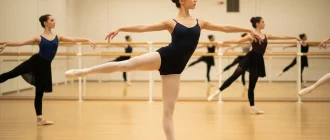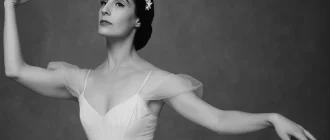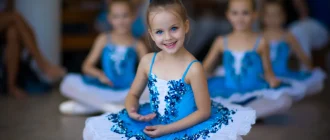Don Quixote Ballet is a captivating adaptation of Miguel de Cervantes’ classic novel. Choreographed by Marius Petipa, this ballet combines love, adventure, and comic folly themes. Performed since 1869, it features rich Spanish dance influences and a vibrant storyline centered on the romance between Kitri and Basilio. This article will explore the origins, key scenes, characters, music, and what makes Don Quixote Ballet a must-see performance.
Key Takeaways
- Don Quixote Ballet, first adapted by Marius Petipa in 1869, blends Cervantes’ literary work with vibrant Spanish dance, highlighting the quest for love and adventure.
- The ballet’s central characters, including Don Quixote, Kitri, and Basilio, capture audiences with their comedic and romantic escapades, making it a timeless classic.
- Iconic scenes like the tavern, gypsy camp, and dream sequences, along with a lively score by Minkus, create a visually and emotionally engaging experience for viewers.
Art de Podcast
| Aspect | Description |
|---|---|
| Origin | Don Quixote was originally choreographed by Marius Petipa in 1869 and set to the lively score by Ludwig Minkus. |
| Plot | The ballet tells the story of the adventurous Don Quixote and his comical squire, Sancho Panza, with a focus on the romance between Kitri and Basilio. |
| Choreographic Masterpieces | Petipa’s choreography includes dazzling, high-energy dances such as the “Kitri’s Variation” and the famous grand pas de deux in Act III. |
| Cultural Influence | With a vibrant representation of Spanish culture, Don Quixote features flamenco-inspired movement, castanets, and fans that add depth to the staging. |
| Technical Highlights | It is known for its demanding technical feats, including difficult balances, pirouettes, and leaps, particularly in the roles of Kitri and Basilio. |
| Famous Productions | Iconic versions include those by the Bolshoi Ballet, the Mariinsky Theatre, and the Royal Ballet, each offering its interpretation and flair. |
| Costumes & Scenery | Colorful, ornate costumes inspired by traditional Spanish attire and dynamic set pieces like windmills and rustic village scenes bring the stage to life. |
| Character Strength | Kitri, a strong-willed and energetic character, contrasts beautifully with the dreamer Don Quixote and his humorous sidekick, Sancho Panza. |
| Musical Score | Ludwig Minkus’s score is filled with lively Spanish rhythms and powerful melodies that perfectly complement the choreography. |
| Impact on Ballet | Don Quixote has remained one of the most popular ballets for its balance of humor, romance, and technical brilliance. |
Why It’s a Must-See: The Don Quixote ballet is an exciting blend of narrative storytelling, exuberant characters, and technically demanding choreography. Whether you’re a seasoned ballet enthusiast or new to the art, the stunning visuals, energetic dances, and unforgettable music make it a performance that shouldn’t be missed.
The Origins of Don Quixote Ballet
Don Quixote Ballet originates from Miguel de Cervantes’ literary masterpiece, Don Quixote. The ballet, inspired by scenes from Cervantes’ novel, follows the whimsical journey of Don Quixote, who embarks on a quest for love and adventure. This literary foundation provides a rich narrative with memorable characters, setting the stage for a captivating and culturally significant ballet.
Marius Petipa, the legendary ballet choreographer, premiered his version of Don Quixote on December 26, 1869, at the Imperial Bolshoi Theatre in Moscow. Petipa’s adaptation was the first major ballet to embrace a Spanish theme, incorporating his extensive knowledge of Spanish dance gained during his years in Spain.
The 1871 revival in Saint Petersburg expanded the ballet to five acts, merging the roles of Kitri and Don Quixote’s Dulcinea, and solidifying its place in the ballet repertoire.
Synopsis of Don Quixote Ballet

The Don Quixote Ballet, first adapted in 1740 by Austrian choreographer Franz Hilverding, is based on Cervantes’ novel and presents a fast-paced, vibrant narrative that keeps audiences engaged from start to finish. While the original libretto emphasized Don Quixote’s adventures, modern versions have focused primarily on the characters Kitri and Basilio, whose love story forms the heart of the ballet.
At its core, the ballet tells the tale of Kitri, the spirited daughter of an innkeeper, who loves the charming barber Basilio. However, her father has other plans, wishing her to marry a wealthier suitor. This conflict between the young couple sets the stage for a series of comedic and romantic escapades, with Don Quixote and his loyal squire Sancho Panza adding to the mix with their misguided dreams and quests.
The ballet is celebrated for its vibrant array of characters and multiple romantic subplots. Don Quixote himself is depicted as an elderly gentleman, enamored with tales of knights and determined to rescue his imagined love, Dulcinea. When faced with challenges, Don Quixote decides to embark on his noble quests, which he attempts with unwavering belief, despite the absurdity of his actions, adding a layer of humor and charm to the narrative.
Key Characters in Don Quixote Ballet
The story of Don Quixote Ballet comes to life through a cast of vibrant characters, each adding depth and humor to the narrative. Don Quixote, his loyal squire Sancho Panza, and the young lovers Kitri and Basilio are central to the story.
Their interactions and adventures form the heart of this timeless ballet.
Don Quixote
Don Quixote embodies the ideals of chivalry, driven by his fantasies of knightly adventures and the pursuit of love. His character is a blend of nobility and comic folly, as he often misinterprets mundane situations as grand quests. This is humorously depicted in the gypsy camp scene, where Don Quixote mistakes a puppet show for reality, believing he is assisting in a noble cause, reflecting the essence of don quixote dreams.
Despite his mistakes, Don Quixote’s unwavering belief in his noble mission adds a touch of poignancy to the ballet. His visions and dreams are endearing and comical, particularly of his beloved Dulcinea. This blend of earnestness and absurdity makes Don Quixote a beloved character in the ballet repertoire.
Sancho Panza
Sancho Panza, Don Quixote’s loyal squire, brings warmth and humor to the narrative. His character contrasts sharply with Don Quixote’s lofty ideals, grounding the story with his practical and often comical perspective. Sancho’s interactions with Don Quixote provide much of the comedy in the story, as he supports his master’s delusions while maintaining his down-to-earth outlook.
Sancho Panza’s loyalty and clumsiness bring a light-hearted contrast to Don Quixote’s grand but misguided adventures. His devotion to Don Quixote’s attempts at his master is unwavering, and his humorous antics endear him to the audience, making him an integral part of the ballet’s charm. Don Quixote vows, and Sancho Panza.
Kitri and Basilio
Kitri and Basilio are the heart of the Don Quixote Ballet, their romance driving much of the narrative. Kitri, the lively daughter of an innkeeper, is determined to marry for love rather than wealth, defying her father’s wishes to marry elsewhere. Basilio, the charming barber, uses his wit and cleverness to win Kitri’s affection and navigate the obstacles they face together.
Their dynamic is highlighted in the tavern scene, where Kitri implores Don Quixote to persuade her father to let her marry Basilio. Their playful and flirtatious interactions in this scene embody themes of love and sacrifice, resonating throughout the ballet.
Iconic Scenes in Don Quixote Ballet
![]()
The Don Quixote Ballet is renowned for its iconic scenes that bring the story to life with vibrant energy and cultural richness. From lively taverns to enchanting dream sequences, these scenes are integral to the ballet’s charm and appeal.
The Tavern Scene
The tavern scene is a pivotal moment in the ballet, showcasing the vibrant Spanish culture and the relationship between Kitri and Basilio. The lively atmosphere is created with spirited dancing acts and choreography that embodies the festive Spanish flair, making it a performance highlight.
Kitri and Basilio’s playful and flirtatious interactions take the forefront in this scene. Their dynamic is full of energy and charm, capturing the essence of their romance and challenges, including the occasional sneak peek by Basilio and the influence of Kitri’s father.
The Gypsy Camp
The gypsy camp scene includes captivating dance performances that display the characters’ interactions and Don Quixote’s misguided attempts to assist. This scene is rich with traditional gypsy dances and colorful performances that add depth to the narrative.
In the gypsy camp, Don Quixote witnesses a romantic setting where the two lovers find refuge, their stories intertwining with traditional gypsy dances. His futile attempts to assist the lovers add a layer of humor and charm to the ballet.
The Dream Scene
The dream scene portrays Don Quixote’s vision of Kitri as Dulcinea, featuring enchanting choreography and elaborate costumes that evoke an otherworldly feel. This scene is one of the most visually striking parts of the ballet, transporting audiences into where Don Quixote’s dreams meet Kitri’s fantastical world.
In this sequence, Don Quixote imagines Kitri as Dulcinea, an ideal woman surrounded by graceful dryads and ethereal choreography. The dream scene contrasts reality and fantasy, showcasing the ballet’s ability to blend humor and poignancy when Don Quixote sees Kitri.
Famous Pas de Deux in Don Quixote Ballet

The Grand Pas de Deux, performed by Kitri and Basilio, is a highlight of the Don Quixote Ballet, showcasing intricate choreography that highlights their technical dancing skills and a deep emotional bond. This duet includes playful and dramatic elements and choreography, reflecting the romantic tension between the characters.
Audience members are often captivated by the exceptional technical skills displayed by the dancers, including intricate pointe work and dramatic lifts. This pas de deux showcases the dancers’ chemistry and artistry, making it a focal point in major ballet productions and competitions.
Music of Don Quixote Ballet
The musical composition for Don Quixote was created by Ludwig Minkus in the late 19th century, with the first performance in 1869. Minkus’s score is characterized by its romantic style, which effectively complements the choreography and enhances the ballet’s narrative.
The orchestration conveys emotions and develops the characters’ stories through musical themes. Though inspired by Cervantes’ novel, Minkus’s score focuses more on the ballet’s principal dancers, Kitri and Basilio, rather than the titular character.
Choreography and Dance Styles
The choreography of Don Quixote Ballet combines classical ballet techniques with vibrant, character-driven pieces, showcasing the humor and energy of the narrative. This blend of choreography creates a dynamic, engaging performance that appeals to a wide audience.
Classical Ballet Elements
Marius Petipa’s choreography for Don Quixote involves intricate footwork and traditional ballet elements, highlighting the dancers’ technical prowess. The choreography is celebrated for its beauty, combining technical complexity with a sense of freedom and joy.
Petipa’s techniques include elaborate pirouettes and dynamic variations, showcasing dance solos that engage in playful dialogue. This combination of technical skill and expressive performance makes dancing the ballet a joy.
Spanish Dance Influences
The ballet reflects Marius Petipa’s experiences in Spain, which informed his understanding of traditional Spanish dance styles. These influences are evident in the vibrant footwork and colorful character portrayals that enhance the cultural authenticity of the performance.
Don Quixote’s ballet costumes reflect Spanish cultural influences, including flamenco dresses for female characters and colorful attire for male dancers. This attention to detail enhances the overall aesthetic and authenticity of the ballet.
Costumes and Set Design
The Don Quixote Ballet is renowned for its vibrant depictions of Spanish culture, thanks to its lively choreography and colorful staging. Costumes and sets bring this cultural richness to life, immersing audiences in the story.
Authentic Spanish Costumes
The costumes in Don Quixote’s ballet are designed to capture the essence of traditional Spanish wedding attire, enhancing the overall aesthetic of the performance. These costumes feature intricate details and vibrant colors representing Spain’s rich cultural heritage.
Flamenco-inspired arm movements and lively footwork highlight traditional Spanish dance elements, reflecting cultural essence. This authenticity adds depth and character to the ballet, making it a visual delight.
Scenic Design
The scenic design in Don Quixote Ballet incorporates iconic elements such as windmills and rustic taverns, which are crucial for depicting the setting of La Mancha. These scenic elements create an immersive atmosphere, transporting the audience to the enchanting landscape of Don Quixote’s adventures.
Key scenic elements, such as windmills and taverns, help recreate the authentic feel of La Mancha, enhancing the storytelling and providing a rich visual backdrop for the ballet. These carefully designed sets add visual appeal and deepen the audience’s connection to the narrative.
Memorable Performances
Over the years, Don Quixote Ballet has seen many memorable performances that have impacted audiences. Paloma Herrera and Julio Bocca delivered a notable performance as Kitri and Basilio for the American Ballet Theatre at the Metropolitan Opera House in New York. Their portrayal as a young couple brought a fresh and dynamic energy to the ballet, captivating audiences with their technical prowess and emotional depth.
Maria Alexandrova, a principal dancer at the Bolshoi, has also been recognized for portraying Kitri in Don Quixote, a role she has performed since 2000. Her performance is celebrated for its beauty and technical skill, further solidifying the ballet’s reputation as a showcase for a dancer of exceptional talent.
Why You Should See Don Quixote Ballet
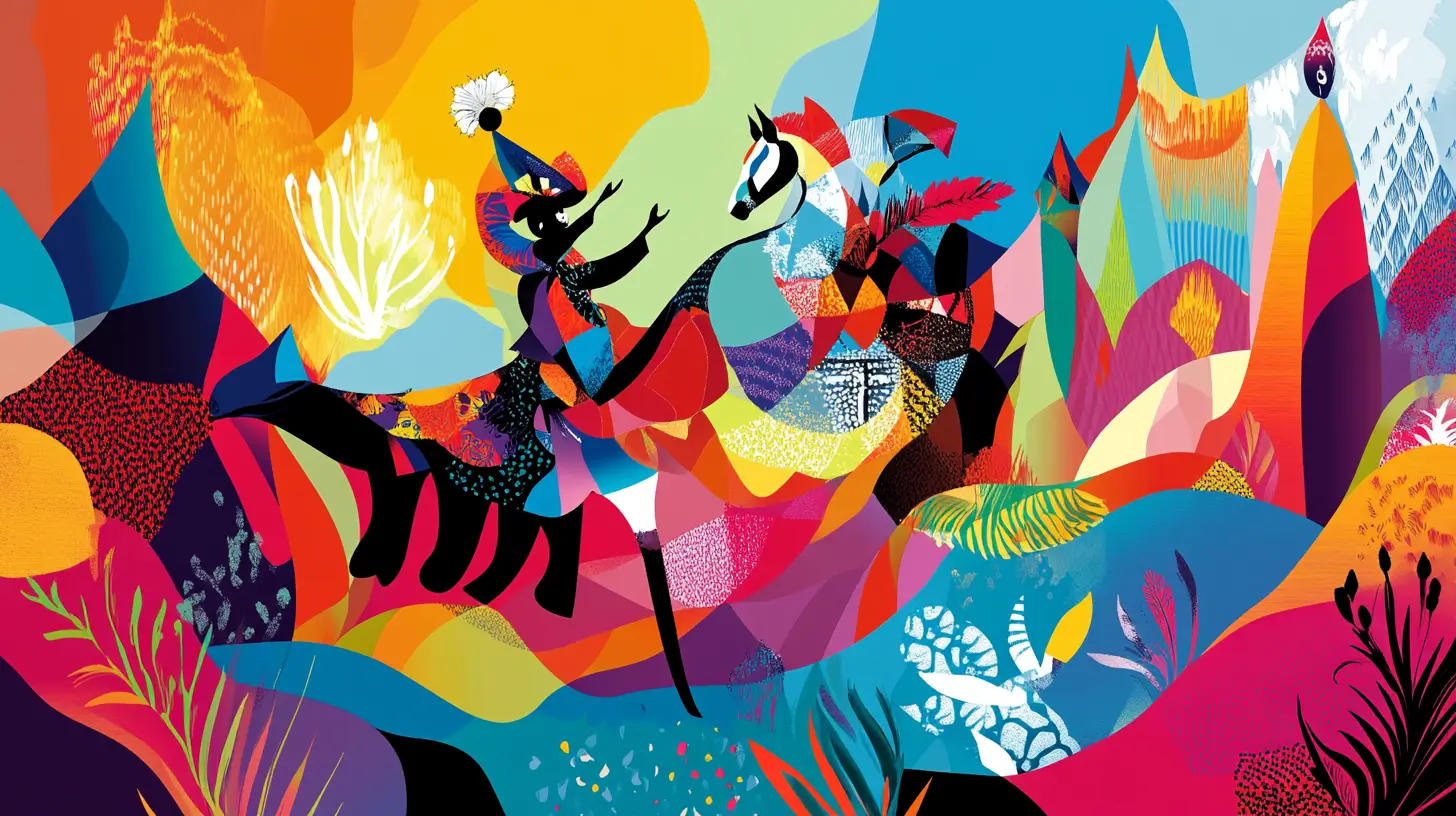
Don Quixote Ballet celebrates storytelling and cultural richness, featuring characters like Don Quixote, Kitri, and Basilio as they quest for love and adventure. The ballet’s humor, infused with comical situations and romantic escapades, appeals to adults and children, making it a delightful experience for all ages.
The music, choreography, and captivating performances combine to create a joyous and heroic delivery despite the plot’s simplistic nature. Watching Don Quixote Ballet means immersing yourself in a cultural treasure that continues to enchant and inspire audiences worldwide.
| Performance | Lead Dancers | Choreographer | Venue | Highlights |
|---|---|---|---|---|
| Bolshoi Ballet’s Don Quixote | Svetlana Zakharova, Denis Rodkin | Marius Petipa, Alexander Gorsky | Bolshoi Theatre, Moscow | It is renowned for its grand staging and virtuosic technique and offers a classic interpretation. |
| American Ballet Theatre’s Don Quixote | Misty Copeland, Herman Cornejo | Marius Petipa, staged by Kevin McKenzie | Metropolitan Opera House, New York | Celebrated for dynamic performances and vibrant sets, highlighting Copeland’s groundbreaking role. |
| Royal Ballet’s Don Quixote | Marianela Nuñez, Vadim Muntagirov | Carlos Acosta after Marius Petipa | Royal Opera House, London | Features Acosta’s fresh choreography with dazzling performances and a touch of modern flair. |
| Mariinsky Ballet’s Don Quixote | Viktoria Tereshkina, Kimin Kim | Marius Petipa, Alexander Gorsky | Mariinsky Theatre, St. Petersburg | Offers a traditional Russian rendition with impeccable artistry and historical authenticity. |
| National Ballet of Cuba’s Don Quixote | Viengsay Valdés, Dani Hernández | Alicia Alonso after Marius Petipa | Gran Teatro de La Habana, Havana | It is infused with Cuban passion and style, showcasing unique interpretations and vibrant energy. |
Summary
The Don Quixote Ballet is a timeless masterpiece that blends humor, romance, and vibrant cultural elements into an unforgettable performance. From its origins in Cervantes’ novel to its lively choreography and memorable characters, every aspect of the ballet contributes to its enduring appeal. Whether it’s the iconic scenes, the famous pas de deux, or the authentic costumes and set design, Don Quixote Ballet offers something for everyone.
If you haven’t seen this ballet yet, it’s time to add it to your must-see list. The rich storytelling, exceptional performances, and cultural authenticity make it a standout in classical ballet. Let yourself be transported to the enchanting world of Don Quixote and experience the magic of this extraordinary ballet.
Frequently Asked Questions
What is the origin of Don Quixote Ballet?
Don Quixote Ballet is based on scenes from Miguel de Cervantes’ famous novel and was first staged by Marius Petipa in 1869 at the Imperial Bolshoi Theatre in Moscow. Pretty cool, right?
Who are the main characters in Don Quixote Ballet?
The main characters in Don Quixote Ballet are Don Quixote, the knight, his loyal squire Sancho Panza, the knight, and the young lovers Kitri and Basilio. Their adventures bring a mix of comedy and romance to the story!
What are some iconic scenes in Don Quixote Ballet?
Some iconic scenes in Don Quixote Ballet are the Tavern Scene, the Gypsy Camp, and the Dream Scene, where Don Quixote dreams and imagines Kitri as his beloved Dulcinea. These moments beautifully capture the story’s whimsical and romantic essence.
Who composed the music for Don Quixote Ballet?
Ludwig Minkus composed the music for the Don Quixote ballet, which premiered in 1869. It’s a delightful piece that brings the story to life!
Why should I see Don Quixote Ballet?
You should see Don Quixote Ballet because it combines vibrant storytelling, choreographed with humor and cultural richness, to create a delightful experience everyone can enjoy!
Frequently Asked Questions about Don Quixote Ballet
Which episode of Cervantes’ novel forms the core of the Don Quixote ballet story?
The libretto is drawn chiefly from the “Wedding of Camacho” episode (Part II, Chapter XIX), where the spirited Quiteria — known in the ballet as Kitri — outwits her father’s plans and elopes with the barber Basilio, forming the ballet’s central love plot.
How did the 1869 Moscow première differ from the 1871 St Petersburg revival?
The 1869 Bolshoi version was a brisk three‑act entertainment, while Petipa’s 1871 revival expanded the score to five acts and eleven scenes, added a prologue and epilogue, and merged Kitri with Don Quixote’s ideal Dulcinea, creating the dual role familiar today.
Who created the ballet’s original principal roles?
In the 1869 première, Wilhelm Vanner danced Don Quixote, Vassily Geltser portrayed Sancho Panza, Anna Sobeshchanskaya created Kitri, and Sergei Sokolov created Basilio, setting character types that later casts still emulate.
What did Alexander Gorsky add in his 1900‑02 revivals?
Gorsky injected naturalistic crowd scenes, rewrote ensemble dances, introduced new solo variations such as the Queen of the Dryads, and popularised the Grand Pas des toréadors, establishing the template for most 20th‑century stagings.
Why is the Act III Grand Pas de Deux a benchmark in ballet competitions?
The wedding Pas de Deux demands blazing virtuosity — 32 fouettés for Kitri, flying split‑jetés, and Basilio’s one‑armed lifts — making it a self‑contained showpiece dancers use to prove technical stamina and theatrical flair.
How did Rudolf Nureyev and Mikhail Baryshnikov popularise Don Quixote in the West?
Nureyev’s 1966 Vienna staging, later filmed with the Australian Ballet, and Baryshnikov’s 1980 American Ballet Theatre version brought Petipa‑Gorsky bravura to new audiences, emphasising pyrotechnic male variations and boosting global demand for the ballet.
What sets Carlos Acosta’s Royal Ballet production apart?
Acosta’s 2013 staging condenses the action to three sunny acts, spices the Gypsy scene with live guitarists. It restores character‑dance details, giving London a Latin‑infused crowd‑pleaser revived regularly since its première.
Which Italian ballet master connects Don Quixote and Swan Lake?
Enrico Cecchetti — an Italian virtuoso who created Sancho Panza in the 1871 revival — later coached and assisted during rehearsals for the 1895 Swan Lake, leaving his stylistic fingerprint on both classics.
What gives Ludwig Minkus’s score its distinctive Spanish flavour?
Minkus laces bright, dance‑hall melodies with castanet‑like percussion and bolero‑style rhythms, matching Petipa’s choreography and earning him the coveted post of Composer of Ballet Music to the Imperial Theatres.
How is the ballet structured today?
Most modern companies present a prologue followed by three acts — marketplace, gypsy camp with Don Quixote’s dream, and the wedding — running roughly two hours plus intervals, a streamlined version of Petipa’s expansive 1871 scenario.
Which Spanish dance elements appear in the choreography?
Petipa threaded flamenco arm‑lines, fast foot‑stamping seguidillas, heel‑work in character shoes, and fan flourishes into classical steps, creating hybrid variations that still read authentically Iberian on stage.
What technical fireworks does Kitri deliver in the coda?
Beyond the famous 32 fouettés, Kitri performs triple pirouettes en dehors, fan‑accented balances, and ballistic grand jetés, all timed to Minkus’s adrenaline‑paced finale.
Why is the Dream Scene (Queen of the Dryads) a highlight?
The ethereal garden vision contrasts Don Quixote’s chivalric fantasy with classical épaulement and flowing corps patterns, offering lyrical relief from the surrounding comedy.
Which companies helped spread Don Quixote worldwide?
Full‑length versions reached the West via Anna Pavlova’s tours in 1924, the Royal Ballet’s 1950 staging, Nureyev’s Vienna‑Australian film, and subsequent productions by San Francisco Ballet, the Bolshoi, and other major troupes.
How long is a typical full‑length performance?
Major houses such as the Royal Opera House list a running time of about two hours and ten minutes, excluding two intervals — enough for an evening’s entertainment without cutting signature dances.
